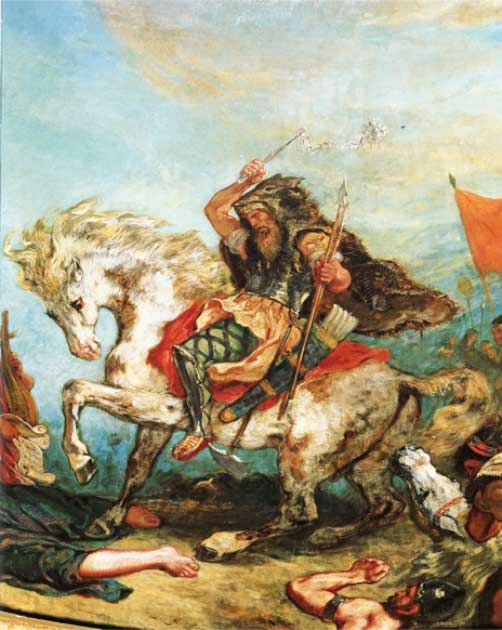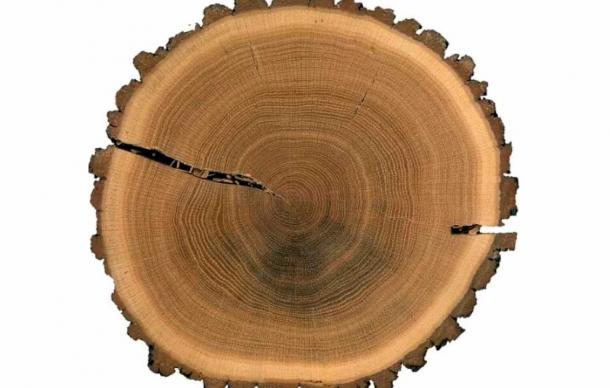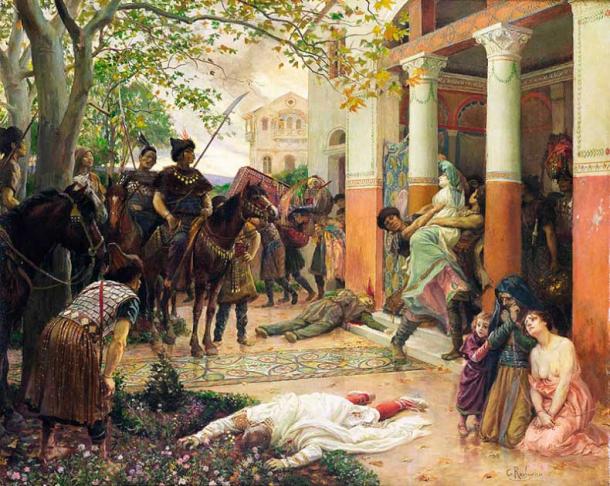
Droughts, Not Gold, Drove Attila to Invade the Roman Empire
History has remembered Attila (c. 406 to 453) for having terrorized the Roman Empire with a campaign of violence as the ruler of a nomadic Central Asian and Eastern European people known as the Huns. Having been born at the beginning of the 5th century AD into the most powerful family north of the Danube River, both Attila and his brother Bleda were master horsemen, archers and swordsmen, highly-skilled in military and diplomatic tactics.
- Power Vacuum Caused by Extreme Drought Led to the Spread of Islam
- A Prolonged Drought Drove Out the Greenland Vikings, Says New Study
Known as “the Scourge of God,” historians have never been clear as to why Attila turned his Hun hordes towards the Roman Empire. They have even less clarity when it comes to understanding why the Hunnic people stopped farming and became violent raiders. Now, a new study looking at tree rings has shattered the idea that Attila’s Huns were gold-hungry barbarians. It seems that they were just coping as best they could with severe changes in the Danube climate.

Attila and his Hordes Overrun Italy and the Arts, by Eugène Delacroix. (Public domain)
Drought Drove Attila into Roman Territory
The Huns' incursions into Eastern and Central Europe in the 4th and 5th century were key factors in bringing about the end of the Roman Empire. The Scourge of God first slaughtered Goth tribes in present-day Germany and Austria, before attacking the Roman Empire, but until now nobody knew why this happened.
The new University of Cambridge study, published in the Journal of Roman Archaeology, looked at tree ring data to find historical information about the climate in Europe over the last 2,000 years. Study author, Dr. Susanne Hakenbeck at the University of Cambridge, concluded that “drought” had encouraged Attila and his Huns “to violently attack the Roman Empire in the 5th century.” The reasons given to explain this hitherto unexplained turn to violence was that they aimed to steal livestock and seize arable Roman land.

Researchers use tree rings to reach conclusions about drought during the time of Attila the Hun. Image shows a polished cross-section of an oak from the Czech Republic. (Ulf Büntgen / Cambridge University)
Tree Rings Talk of Extremely Dry Summers
The new study looked at stable isotopes in tree rings which disclose data regarding the environment in different time periods. Stable isotopes are non-radioactive forms of atoms that are used in a broad variety of applications, including water and soil management, environmental studies, nutrition assessment studies and forensics.
All of the trees had either been grown in what is today the Czech Republic or southeast Bavaria. The scientist specifically analyzed carbon and oxygen isotopic signatures (delta C13 and delta O18) in around 27,080 individual tree rings from 21 living and 126 relict oak trees. The tree rings demonstrated how severe droughts between 420 AD to 450 AD “reduced crop yields and pasture for animals beyond the floodplains of the Danube and Tisza rivers in Hunnish territory.”
The results show that the Huns' apparently inexplicable violence towards the Romans was perhaps in response to climatic fluctuations. The peak of Hunnic incursions in Roman lands occurred between 447 AD and 452 AD. The researchers think it is no coincidence that at this time central Europe's Carpathian Basin was experiencing “extremely dry summers.” Dr. Susanne Hakenbeck said the severe climate shifts noted in the tree rings suggest that Attila and his Huns increased their raiding activity on Roman lands due to the climate.

Roman villa in Gaul sacked by the hordes of Attila the Hun by Georges Rochegrosse. (Public domain)
Attila’s Climate Coping Strategy
The researcher said livestock raiding is quite common among populations of animal herders and that drought stopped them rearing large animal herds in their traditional lands. Furthermore, it is likely that one aim of the raids was to acquire food and livestock, but “also for gold” as Attila needed a full war chest to pay his men.
- Drought Stones Pass Messages of Warning to Europeans
- Witchcraft, Hunger, War, and Disease: Charting the Downfall of Arroyo Hondo Pueblo
What this all means is that while up to now the Huns have generally been regarded as violent gold hungry barbarians, the Hunnic invasion of Roman territory was a sort of climate “coping strategy.” Another aspect of Attila’s climate coping strategy was his need for an extensive strip of land on the floodplain of the Danube, which the study author said “offered better grazing in a time of drought.”
Top image: The Huns approaching Rome, led by Attila the Hun, painted by Ulpiano Checa. Source: Public domain
By Ashley Cowie
















Comments
"The results show that the Huns' apparently inexplicable violence towards the Romans was perhaps in response to climatic fluctuations."
The Romans had a terrible history of violence. They were embracing Christianity by the time of Attila, but had not exactly shaken off the violence of the past. Enmity simmers for a long time. This doesn't excuse the Hunnic warfare any more than climate catastrophe does, but it does help explain where it was directed. Besides, Rome wasn't that far away.